Results 1,961 to 1,970 of 12091
Thread: Anandtech News
-
06-06-12, 12:00 AM #1961
Anandtech: Computex 2012: MSI Overclock Warranty
As part of our tour of the MSI booth, I was shown the Z77 MPower motherboard - designed as a mainstream XPower gaming and overclocking board. I was also informed that this board will have an overclockers warranty - if you break the board while overclocking, then MSI will replace it no questions asked (within warranty). For extreme overclockers, this is good, however if you inspect the reality of the situation, then MSI can only realistically run this feature on high-production model lines. Limited quantity SKUs may not ever have this feature.
More...
-
06-06-12, 03:00 AM #1962
Anandtech: Qualcomm Atheros makes two 802.11ac solutions official - WCN3680 and QCA98
Way back at MWC we saw Qualcomm Atheros demonstrating single spatial stream 802.11ac on a MSM8960 MDP, where it was pushing 230 Mbps to a nearby 802.11ac router. I talked about the WCN which works in conjunction with the WLAN PHY onboard the MSM8960 SoC, but got the part number wrong apparently (I said it was WCN3860). Qualcomm Atheros is now making that particular part official, and it's the WCN3680, a single spatial stream 802.11ac and BT 4.0 combo solution that works in conjunction with either MSM8960 or the quad core APQ8064 Krait SoCs.
Back then, I suspected that WCN3680 might not be implementing 256QAM (which is an optional 802.11ac feature), based on the 230 Mbps transfer rate we saw and talk of this being Airgo IP. The announcement states that WCN3680 is capable of a full 433 Mbps single spatial stream PHY rate, which corresponds to MCS-9, and thus includes 256QAM support. The announcement goes on to note that end user throughput will be around 200 Mbps, which is much closer to what we saw at the MWC demo, which is a little confusing. Either way, mobile 802.11ac is nearly upon us, as Qualcomm Atheros and the other combo chip players continue to trickle out announcements. This solution for MSM8960/APQ8064 again uses the on-SoC baseband for WLAN, WCN3680 is that external RF which enables it. This is roughly analogous to how the cellular baseband situation works - you use the on SoC baseband and external RF.
The other announcement is Qualcomm Atheros' beefier 802.11ac solution which I've been waiting to hear about. This is the QCA986x family, which does 802.11ac and BT 4.0 solution over PCIe, which comes in a 2 or 3 stream variant (QCA9862 and QCA9860, respectively) with full MCS-9 support (either 867 Mbps for 2 stream or 1.3 Gbps for 3 stream). This is a PCIe solution which will no doubt make its way into notebooks and other desktop platforms. Both QCA986x and WCN3680 are currently sampling.
Source: QCA
More...
-
06-06-12, 03:30 AM #1963
Anandtech: Google posts CDMA/LTE Galaxy Nexus 4.0.4 IMM76K Factory Images
A few days ago Google started rolling out the CDMA/LTE Galaxy Nexus 4.0.4 IMM76K update en-masse to Verizon subscribers. I mentioned a relatively well known trick to improve your odds of getting the OTA in our pipeline piece about it, and today Google (courtesy JBQ) has rolled out the full factory restore image on its factory images for nexus phones page. This comes as a very welcome step towards rebuilding the reputation of the CDMA/LTE Galaxy Nexus device, even after the CDMA/LTE Galaxy Nexus lost AOSP support and following its massively delayed 4.0.4 rollout.
Interestingly enough, reader and avid twitter user CJ (@N301DQ) seems to have been at least partially responsible for prompting JBQ to build and post the full IMM76K factory restore images.@N301DQ Done. mysid IMM76K images available at the usual location.
— Jean-Baptiste Queru (@jbqueru) June 5, 2012
Source: Factory Images for Nexus Phones
More...
-
06-06-12, 05:30 AM #1964
Anandtech: In Win GreenMe 650W
In Win sent us their newest model GreenMe rated at 650W. Billed as an eco-friendly alternative to the common PSUs, In Win boasts about the reduced energy costs associated with the high efficiency design. Given the eco emphasis, we'll examine how the PSU does in those areas along with the usual tests. Is this green power supply a good option for the environmentally conscious users? Read on to find out!
The GreenME like any decent modern power supply also carries an 80 Plus certification, this time for the Bronze level. That means the PSU should run at 82% efficiency with a load of 20%, reaching 85% efficiency or more at a load of 50%, and still maintain 82% efficiency at the maximum 650W rated load.
More...
-
06-06-12, 02:00 PM #1965
Anandtech: Fujitsu Launches New U772 and UH572 Ultrabooks
Fujitsu isn’t one of the companies we at AnandTech usually encounter in the realm of laptops; for whatever reason, their presence in the US market is decidedly limited. Nevertheless, they sent us news letting us know of their two latest Ultrabooks, the 13.3” Lifebook UH572 and the 14” Lifebook U772. The specs follow the familiar pattern, which we’ll cover in the table below, with a few exceptions.
The biggest differentiator is that Fujitsu’s Lifebook offerings generally target the business sector more than the consumer market, and Fujitsu calls these “commercial Ultrabooks”. That should mean build quality is generally higher, though we haven’t handled them so we can’t say for certain. You also get a fingerprint scanner as part of the package on the U772, and both models support port replicators. For now, the UH572 is only available in one configuration while the U772 is a user configurable (with a lower priced preconfigured model due in late June).
Considering both models come from the same OEM, some of the differences between the two offerings are quite odd. The UH572 is a 13.3”-screen chassis while the U772 is a 14”-screen chassis, and yet the dimensions of the U772 are only 0.15” wider while being 0.36” shallower and slightly thinner. The U772 also weighs 10% less when equipped with an SSD. Other differences include the OS, flash memory support, the wireless chipset, the lack of mini LAN and the fingerprint scanner on the UH572, and the memory setup (e.g. onboard vs. SO-DIMM). Of course, there’s a reason for all of that, as the UH572 starts at $999 while the least expensive configuration of the U772 starts at $1149. Images of the two Ultrabooks are in the gallery below, along with some (apparently incorrect on the UH572, as they show a fingerprint scanner and mini LAN) schematics drawings.Fujitsu Lifebook Ultrabook Specifications Model UH572 U772 Processor Core i5-3317U
(1.7GHz/2.6GHz Turbo, 3MB L3)Core i7-3667U
(2.0GHz/3.2GHz Turbo, 4MB L3)
Core i5-3427U
(1.8GHz/2.8GHz Turbo, 3MB L3)
Core i5-3317U
(1.7GHz/2.6GHz Turbo, 3MB L3)Chipset Intel HM76 Intel HM76 or QM77 Memory Motherboard Mounted
(2x2GB DDR3-1600)
(2x4GB via service by Fujitsu)1x SO-DIMM
(Up to 8GB DDR3-1600)Graphics Intel HD 4000 (16 EUs)
1050MHz Max ClockIntel HD 4000 (16 EUs)
1050 (3317U) or 1150MHz Max ClockDisplay 13.3" 768p (1366x768) 14" Glossy or Matte 768p (1366x768) Hard Drive(s) 500GB 5400RPM HDD
32GB SSD Cache320/500GB 5400RPM HDD with
32GB SSD Cache, or
128/256GB SSDBattery 4-cell Lithium-Polymer
Up to 5:50 hours battery life4-cell 45Wh Lithium-Ion
Up to 7:00 hours battery lifeI/O Ports, etc. HDMI
2 x USB 3.0 (1x Anytime Power)
1 x USB 2.0
Headphone jack
Intel 2230 802.11bgn WiFi
Bluetooth 4.0 (Intel 2230)
Intel WiDi
SD/MS Flash reader
HD webcam
65W AC adapterHDMI
2 x USB 3.0 (1x Anytime Power)
1 x USB 2.0
Headphone jack
Intel 6205 802.11agn WiFi
Bluetooth 4.0 (Optional)
Mini LAN (Adapter cable required)
SD Flash reader
HD webcam
65W AC adapterDimensions 12.72" x 9.21" x 0.71" (WxDxH)
(323mm x 234mm x 18mm)12.87" x 8.85" x 0.69" (WxDxH)
(327mm x 225mm x 17.5mm)
Note: 0.61”/15.5mm without feetWeight 3.5 lbs (1.59kg) 3.15 lbs (1.43kg) with SSD
(3.18 lbs/1.45kg with HDD)Operating System Windows 7 Home Premium 32/64-bit Windows 7 Professional 32/64-bit Pricing $999 MSRP Configurable starting at $1299
Preconfigured MSRP $1149 (late June)
Gallery: Fujitsu U772 and UH572 Ultrabooks





More...
-
06-06-12, 05:30 PM #1966
Anandtech: Computex 2012: ASRock's New Motherboards: X79 Extreme11 with LSI SAS and Z
ASRock have now gone slightly mad. You could argue that within that madness lies some semblance of innovation, as they are going to release a mad product with features that no-one else in the motherboard market is considering. Take their upcoming X79 Extreme11:
In case these pictures are in any way confusing, let's break it down. The X79 chipset comes with 40 PCIe lanes from the CPU, enough for x16/x8/x8/x8 when using four-way SLI or CrossFire. So what happens when ASRock add two PLX PXE 8747 chips? These chips typically take 16 PCIe 3.0 lanes and essentially switch them into 32, so ASRock are taking 32 lanes from the CPU and making them 64, allowing for x16/x16/x16/x16. The BOM cost for these chips are obviously a premium as well. But 'that leaves 8 lanes' I hear you say. Well that leaves another X79 Extreme11 feature to discuss - the addition of an LSI chip.The LSI chip enables 8 SAS ports on the motherboard, all capable of RAID (at least RAID 0). Hence why in the first picture you see a total of 14 SATA looking ports. ASRock believe that there is a market in users who will want to utilise the x16/x16/x16/x16 usage scenario, or the 8 SAS port one, or both.
Also up for a look is a new direction for ASRock - serious overclocking. For a while now, top overclocker NickShih has been under the employ of ASRock for guidance on how to organise their systems to cater for normal and extreme overclocking. But for the first time, ASRock are releasing a motherboard specifically aimed at that crowd - the Z77 OC Formula:
The OC Formula has several features designed specifically for overclocking. The power delivery is very efficient, reportedly around 97% due to a dual-stack MOSFET and Silicon-Chromium chokes. The VRM heatsink is bulky with an additional fan, but is also a water block for water cooled systems. The CPU 12V power delivery uses solid pins for cleaner power delivery and can hold more current under load. As we look at the board above, just below the memory are a set of dual two-digit debug LEDs, which ASRock will program to display temperature (e.g. -130 under liquid nitrogen). Next to these LEDs are two sets of voltage read points, and +/- buttons for BCLK adjustments. The pins inside the socket are also thicker, to reduce resistance between the CPU and the motherboard.
Time will tell if this is a board worthy of overclocking world records, or if these features can help regular overclockers achieve good and stable systems.
More...
-
06-06-12, 06:00 PM #1967
Anandtech: Computex 2012: ASUS Motherboard Technical Showcase - ZEUS with dual GPU on
Producing concept boards is common in the automotive industry. Every year, companies such as Ford, Audi, Jaguar or Volkswagen will produce a concept as an indication of 'this is what we could do if we wanted' or 'this is an idea, what do you think?'. In the motherboard industry, seeing concept motherboards on display is something of an oddity. However, innovation in the motherboard landscape doesn't come very often, so seeing ASUS go forth and provide a pair of concept boards was an interesting exercise. Last year ASUS teased us with the Danshui Bay concept board, utilising 1366 and 2011 sockets on the same product - this year, the concept is a little more realistic.
Meet Zeus. This motherboard is slightly mad. Take a regular X79 chipset motherboard, but do away with all the PCIe lanes. Then in their place, add two GPUs on the PCB itself, cover with heatsink, done. Even though in the CPU market we are seeing consolidation of components, the very nature of computer building is that it is component driven - take the memory, the CPU, the motherboard and the GPU(s) you want and fit together. The component market fluctuates in price, so this component philosophy works well for users. But applying this concept to motherboards in a serious manner gives Zeus:
Most of the time, concepts are not put into production. I have a distinct feeling that while Zeus may be a reasonable idea, it wouldn't be coming to market. Also on display was the Wolverine. The brief for the engineers on this motherboard was 'how many power phases can you put on a board?'. The answer from ASUS was 40, which suggests 8x2x2 multiplexing + 8 for other things:Similar to the Zeus, don't expect the Wolverine on sale any time soon. 40 phases is almost rediculous and has no serious benefit to any user.
Gallery: Computex 2012: ASUS Motherboard Technical Showcase - ZEUS with dual GPU onboard
More...
-
06-06-12, 07:30 PM #1968
Anandtech: First look at an AMD Brazos 2.0 Motherboard
Sapphire showed us its Brazos 2.0 motherboard based on AMD's E2-1800 APU with Radeon HD 7340 graphics. The Pure Mini E2-1800 uses SO-DIMMs (8GB max) and features both a mini-PCIe and a full PCIe x16 slot.
Gallery: First look at an AMD Brazos 2.0 Motherboard



More...
-
06-06-12, 07:30 PM #1969
Anandtech: Sapphire's Passively Cooled Radeon HD 7770
Yesterday I met with AMD's well known GPU partner Sapphire. Among their laundry list of AMD based graphics cards was this passively cooled Radeon HD 7770. The board layout had to be redesigned to accommodate the gigantic passive cooler (DRAM had to be relocated to the back of the board) but the end result is a fully clocked (1GHz core clock) Radeon HD 7770 without a single fan.
Gallery: Sapphire's Passively Cooled Radeon HD 7770




More...
-
06-06-12, 08:30 PM #1970
Anandtech: Interview with David Chien – VP of ECS Channel Business Unit
Last year at Computex, we had the opportunity to have a group interview with David Chien, VP of ECS’ Channel Business Unit. This year, ECS have also wheeled out their VP for some more Q&A. This year’s focus is on ECS’ Golden Brand, of which we have one of their motherboards in for review. Unfortunately the meeting took place in the middle of the Computex Hall which was difficult to get exact word-for-word responses for each question, however I will summarize the key points from ECS.
Q: What key innovations is ECS promoting at Computex 2012?
A: Here at Computex 2012, we are the first company to design and launch a Z77 Golden Board, and also coupled with this is our ECS Golden NVIDIA GTX 680. Each year ECS brings new products and new technologies for end users to enjoy. ECS has several major product lines – motherboards, ODM devices, and AIOs.
ECS as a brand attempt to focus on unique products and testing. This is why this year we are announcing our new Nonstop testing system – motherboards with this certification are tested beyond the standard to ensure stability in obscure climates. Our motherboard focus is in several areas – gaming (as the gaming market is still increasing), motherboards to ODMs, and motherboards for AIOs, as the ODM AIO market has been booming over the past two years.
At ECS rather than highlight overclocking, we highlight stability, especially with our NonStop testing regimen. This consists of a 50 degree Celsius environment whereby the motherboard is tested under load for 72 hours. We also include our Super Alloy Choke technology, with increased efficiency and a 20-25% increased temperature range. Also of note is our Qooltech technology (a temperature responsive color pad on the chipset heatsink) and EZ Charger, which allows users to charge USB devices when the system is switched off.
As part of our Golden Series brand, we should note that the CPU socket is coated in actual gold, rather than gold colored. Our Golden Series will be focused on our high end products, but we offer a full range of SKUs for Ivy Bridge.
In terms of our AIOs, we offer ODMs and users an easy system to upgrade with our screwless design. This also offers AIOs to customers who require a secure system – such that the hard drive could be removed from our AIOs easier than our competitors.
ECS is also designing an ultrabook as an ODM design. We currently have interest in Turkey and Russia for this device. ECS is also moving into wireless routers and devices of that nature to encourage integration.
Q: With the gold plated socket, how will that withstand power user abuse>
A: In our experience, very few users will change CPUs within our machines – as such in motherboards we expect the pins are more likely to end up damaged than the socket cover.
Q: In Indonesia, our local ECS distributors give a 5 year warranty on certain products. Why is ECS so confident to give a 5 year warranty?
A: Today we find that most of the components on a motherboard are very durable. Given that users are likely to upgrade every few years, we feel that this warranty is applicable in those regions.
Q: How are sales going compared to predictions to last year?
A: We see that the global instability in the market month to month, and the nature of the market is very aggressive. However, 2-3% growth is expected. Last year we sold 7 million units, and this year we are aiming for 8 million – a better than market growth rate. To achieve this, we are expanding into new markets and products – for example in IPC we have users who want to power 20 monitors, so we design products to meet their requirements.
Q: ECS sell a lot of systems to resellers and OEMs. In the future would you enter the market with your ODM products as ECS?
A: Anything is possible! ECS is still a component company. 70% of our motherboards are still to OEMs. Big brands are still selling our components in their pre-built systems. It is possible in the future that we may sell to consumers under a different brand name.
Q: Z77 as a chipset has a lot of high end motherboards, and most of your competitors try to advertise themselves as a good overclocking brand. Will ECS support overclockers in the future?
A: 3 or 4 years was good for overclocking, but today most people enjoy the regular speeds of the high end products already. Motherboards today are good enough. Gamers and Power Users enjoy fast reactions and responses provided by current products anyway. The focus for gamers is the environment in which they play, which today is pretty good. ECS does not want to join the overclocking trend at this time - we want to highlight our design as a focus of stability, rather than perhaps unstable overclocking scenarios.
Q: What is next? You have a Golden Board, are we going to see Silver and Bronze, or Platinum?
A: Nonstop testing, second generation.
We would like to thank David for his time in answering the media questions.
More...
Thread Information
Users Browsing this Thread
There are currently 15 users browsing this thread. (0 members and 15 guests)




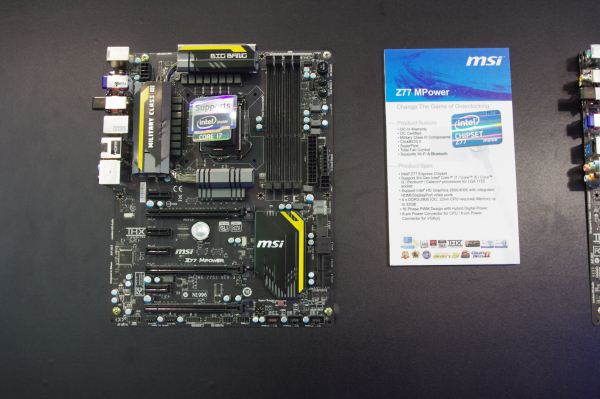
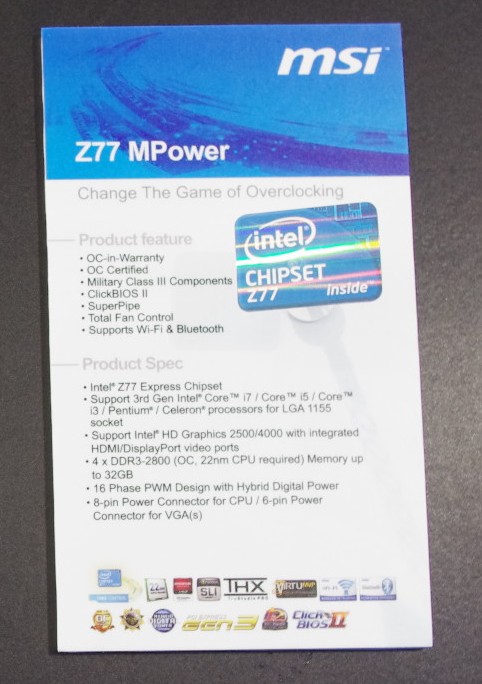

 Quote
Quote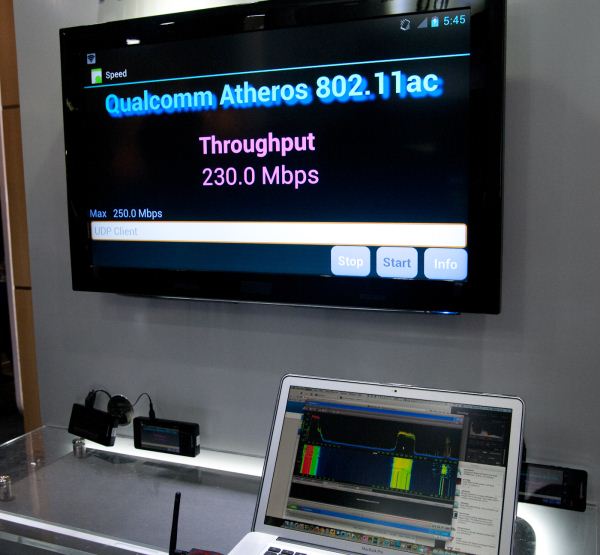

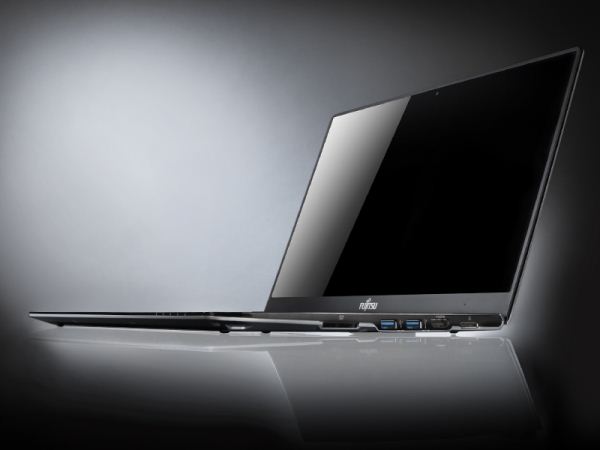

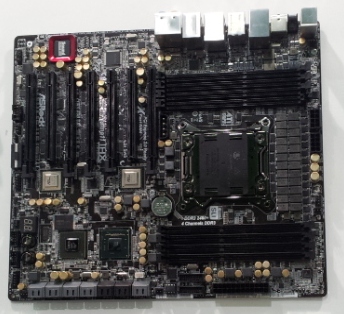
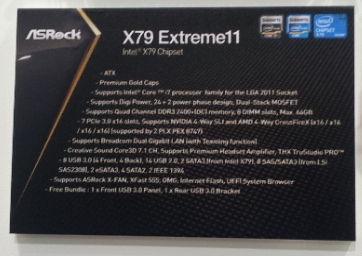
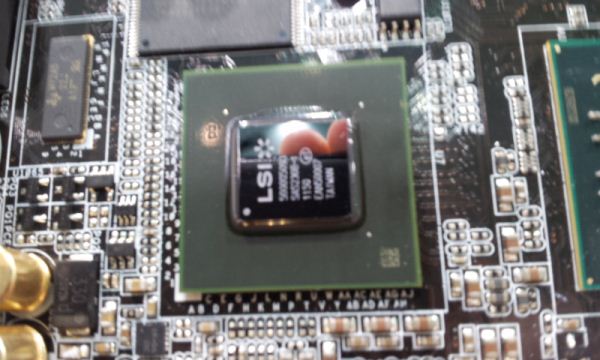









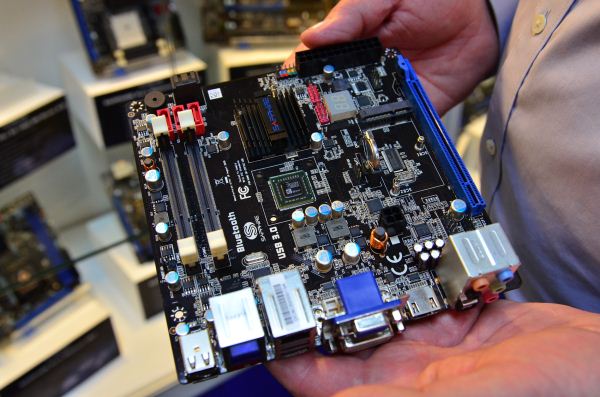


















Bookmarks